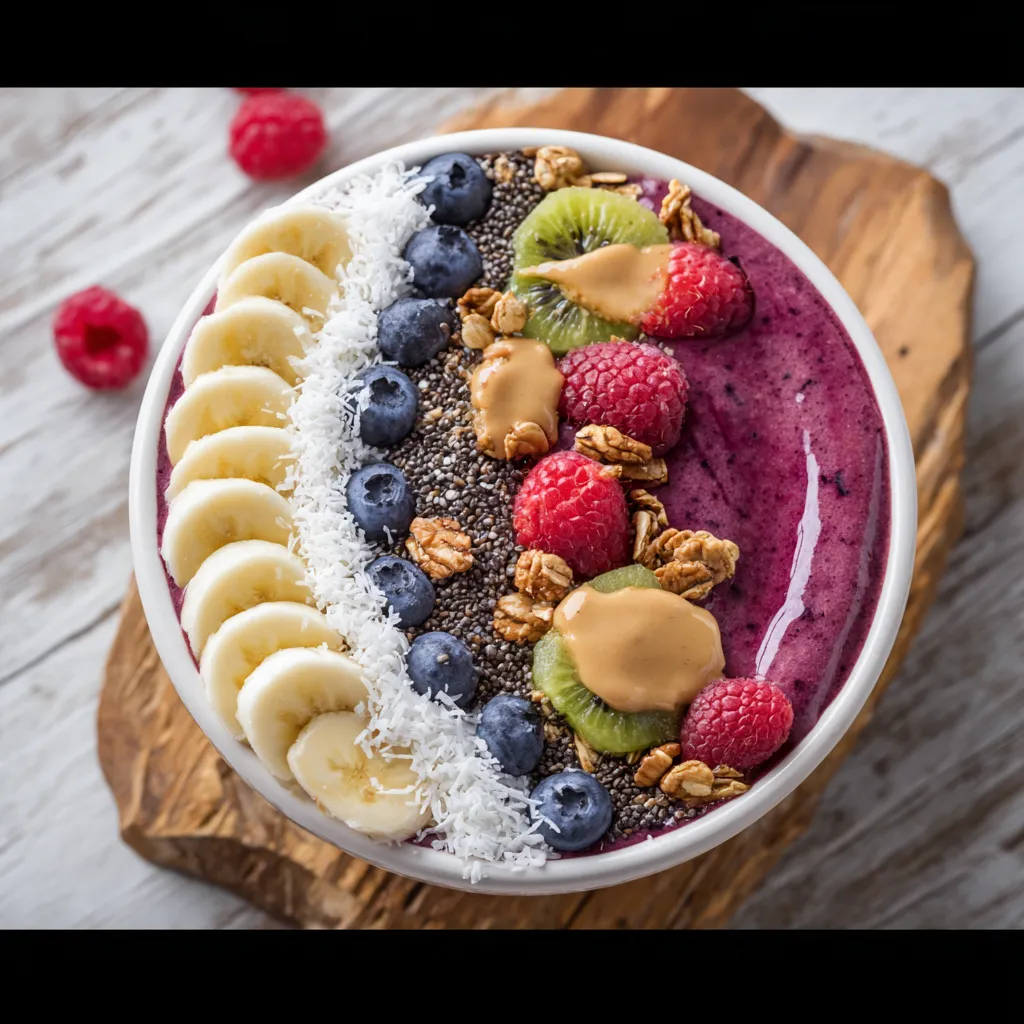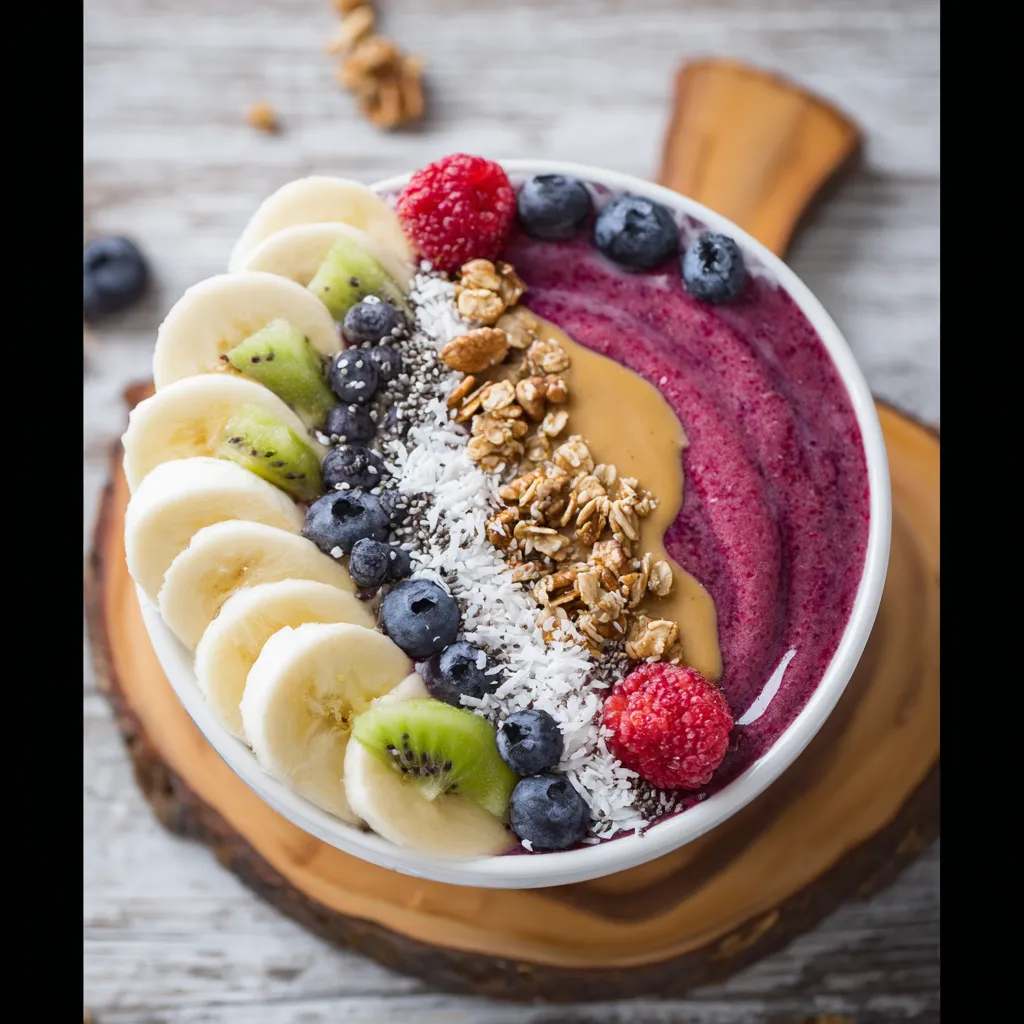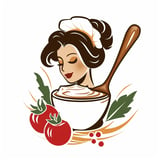 Bookmark
Bookmark
This berry-loaded breakfast smoothie bowl transforms your morning routine into a nutritious and Instagram-worthy experience. The thick, creamy texture makes it feel more substantial than a drinkable smoothie, while the colorful toppings provide both visual appeal and textural contrast that keeps each bite interesting.
I started making smoothie bowls during a health kick that never ended. My family initially rolled their eyes at another "trendy" breakfast, but now they request these colorful bowls several times a week, especially my teenage daughter who loves creating her own topping combinations.
Ingredients
- Frozen banana creates the perfect ice cream like texture without actual ice cream
- Frozen mixed berries deliver antioxidants and natural sweetness look for packages without added sugar
- Greek yogurt provides protein and creaminess select full fat for the richest texture
- Milk of choice thins the mixture just enough choose unsweetened varieties to control sugar content
- Nut butter adds healthy fats and staying power natural varieties without added oils work best
- Vanilla extract enhances all the flavors without adding sweetness pure extract offers the cleanest taste
- Honey or maple syrup optional sweeteners use only if your fruit isnt naturally sweet enough
Step-by-Step Instructions
- Prepare Your Ingredients
- Ensure your banana is properly frozen solid for at least 2 hours preferably overnight. Cut into chunks before freezing for easier blending. Measure all ingredients before starting so your mixture doesn't melt while you search for components.
- Blend Strategically
- Start with frozen ingredients and yogurt at the bottom near the blade. Begin blending on low speed to create a vortex then gradually increase power. This technique prevents air pockets and ensures everything incorporates evenly without overheating the mixture.
- Achieve Perfect Consistency
- The smoothie should be thick enough that a spoon stands up in it almost like soft serve ice cream. If too thick add milk one tablespoon at a time. If too thin add more frozen fruit or a few ice cubes. The right consistency keeps toppings from sinking.
- Create Your Canvas
- Transfer the smoothie mixture to a wide shallow bowl using a silicone spatula to get every bit. Spread it evenly with the back of a spoon creating a smooth surface for your toppings. The presentation is half the enjoyment.
- Apply Toppings Artfully
- Arrange toppings in sections rather than mixing them together. This creates visual appeal and allows you to get different flavor combinations in each spoonful. Start with granola then add fruits seeds and finally drizzles.
 Bookmark
Bookmark
The frozen banana is truly the secret ingredient here. I once tried making this without freezing the banana first and ended up with something more like fruit soup than a smoothie bowl. That kitchen failure taught me that patience pays off when creating the perfect texture.
Make Ahead Freezer Packs
Save precious morning time by creating smoothie bowl freezer packs. Portion banana chunks and berries into individual freezer bags with any dry add ins like protein powder or spices. In the morning simply dump a pack into your blender with the fresh ingredients. This system has saved my weekday mornings countless times especially when rushing kids to school.
Temperature Control Tricks
The enemy of a perfect smoothie bowl is heat. Keep everything cold by chilling your bowl in the freezer for 10 minutes before serving. If your kitchen is warm blend in shorter bursts to prevent friction heat from melting your mixture. For extra thickness add a quarter cup of frozen cauliflower florets you wont taste them but theyll keep your bowl spoonable longer.
Nutritional Boosters
Transform this breakfast into a superfood powerhouse with strategic additions. A tablespoon of hemp seeds adds complete protein without affecting taste. A handful of spinach disappears visually but adds iron and vitamins. A quarter teaspoon of cinnamon helps regulate blood sugar. My personal favorite addition is a tablespoon of unsweetened cocoa powder which turns this into a chocolate berry treat while adding antioxidants.
Seasonal Variations
Adapt your smoothie bowl throughout the year for the freshest flavors. Summer calls for peaches nectarines and cherries. Fall works beautifully with pear and cinnamon combinations. Winter citrus adds brightness when berries are out of season. Spring welcomes strawberries and rhubarb for tang. Learning to work with seasonal produce not only improves flavor but reduces your grocery bill by purchasing what's abundant.
Recipe FAQs
- → Can I prepare the smoothie bowl mixture the night before?
While you can blend the ingredients ahead of time, smoothie bowls are best enjoyed immediately after preparation for optimal texture. If needed, you can store the blended mixture in an airtight container overnight, but the consistency will become thinner as it defrosts. Add a few ice cubes and reblend briefly before serving to restore some thickness.
- → How do I make sure my smoothie bowl is thick enough?
The key to a thick smoothie bowl is using frozen fruits and minimal liquid. Start with less milk than you think you need—you can always add more. Ensure your banana is completely frozen, and blend gradually, starting on low speed. If it's still too thin, add more frozen fruit or a few ice cubes and blend again.
- → What are the best substitutes for banana in a smoothie bowl?
If you don't enjoy banana or have an allergy, try frozen mango chunks, frozen avocado, or frozen cauliflower (surprisingly neutral in taste when combined with other ingredients). These alternatives provide similar creaminess. You might need to adjust sweetness with additional honey or maple syrup since bananas contribute natural sweetness.
- → How can I increase the protein content in my smoothie bowl?
For extra protein, add a scoop of your favorite protein powder (vanilla works well with most fruit combinations), use Greek yogurt which has more protein than regular yogurt, include more nut butter, or sprinkle hemp seeds on top. You could also blend in silken tofu for a protein boost that won't affect the flavor significantly.
- → What's the difference between a smoothie and a smoothie bowl?
The main difference is consistency and consumption method. Smoothie bowls are intentionally thicker (using less liquid during blending) and meant to be eaten with a spoon rather than drunk. They're also typically topped with various ingredients that add texture, nutrition, and visual appeal, creating a more substantial meal experience compared to a drinkable smoothie.
- → Can smoothie bowls be part of a weight loss plan?
Absolutely! Smoothie bowls can be weight-loss friendly when portioned appropriately. Focus on protein (Greek yogurt) and fiber (fruits, seeds) while being mindful of high-calorie toppings like granola, coconut flakes, and nut butters. For a lower-calorie version, use unsweetened almond milk, limit added sweeteners, and measure portion sizes of calorie-dense toppings.
